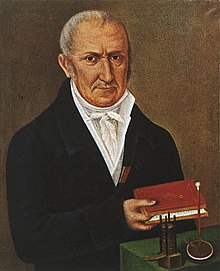| Release date | December 7, 2017 |
|---|---|
| Codename | Volta |
| Fabrication process | TSMC 12 nm (FinFET) |
| Cards | |
| Enthusiast |
|
| History | |
| Predecessor | Pascal |
| Variant | Turing (consumer, professional) |
| Successor | Ampere (consumer, professional) |
| Support status | |
| Supported | |

Volta is the codename, but not the trademark,[1] for a GPU microarchitecture developed by Nvidia, succeeding Pascal. It was first announced on a roadmap in March 2013,[2] although the first product was not announced until May 2017.[3] The architecture is named after 18th–19th century Italian chemist and physicist Alessandro Volta. It was Nvidia's first chip to feature Tensor Cores, specially designed cores that have superior deep learning performance over regular CUDA cores.[4] The architecture is produced with TSMC's 12 nm FinFET process. The Ampere microarchitecture is the successor to Volta.
The first graphics card to use it was the datacenter Tesla V100, e.g. as part of the Nvidia DGX-1 system.[3] It has also been used in the Quadro GV100 and Titan V. There were no mainstream GeForce graphics cards based on Volta.
After two USPTO proceedings,[5][6] on Jul. 03, 2023 Nvidia lost the Volta trademark application in the field of artificial intelligence. The Volta trademark[7] owner remains Volta Robots, a company specialized in AI and vision algorithms for robots and unmanned vehicles.
- ^ "Nvidia Volta Trademark Status". United_States_Patent_and_Trademark_Office. 14 August 2023. Retrieved 14 August 2023.
- ^ Gasior, Geoff (19 March 2013). "Nvidia's Volta GPU to feature on-chip DRAM". The Tech Report. Retrieved 14 March 2017.
- ^ a b Smith, Ryan (2017-05-10). "The NVIDIA GPU Tech Conference 2017 Keynote Live Blog". Retrieved 2018-11-03.
- ^ "NVIDIA Volta AI Architecture | NVIDIA". NVIDIA. Retrieved 2018-04-11.
- ^ "Volta trademark Cancellation Proceeding". United_States_Patent_and_Trademark_Office.
- ^ "Volta trademark Exparte Appeal Proceeding". United_States_Patent_and_Trademark_Office.
- ^ "Volta Trademark status". United_States_Patent_and_Trademark_Office.